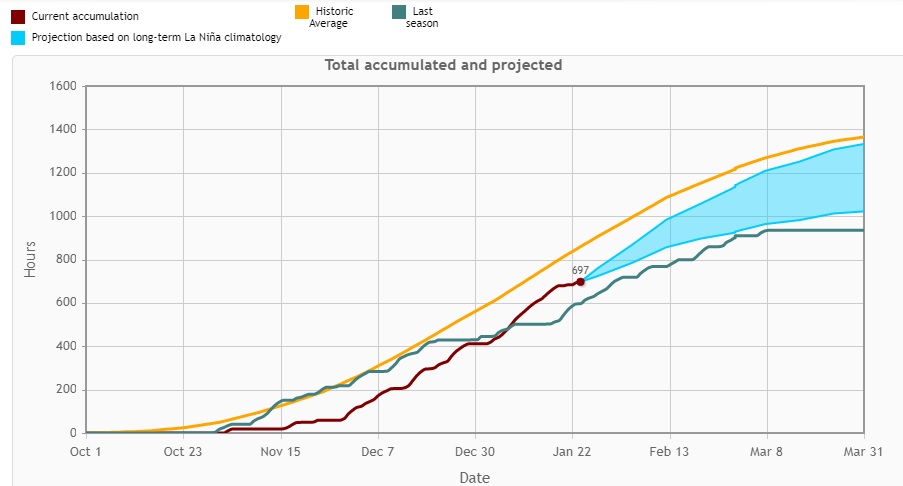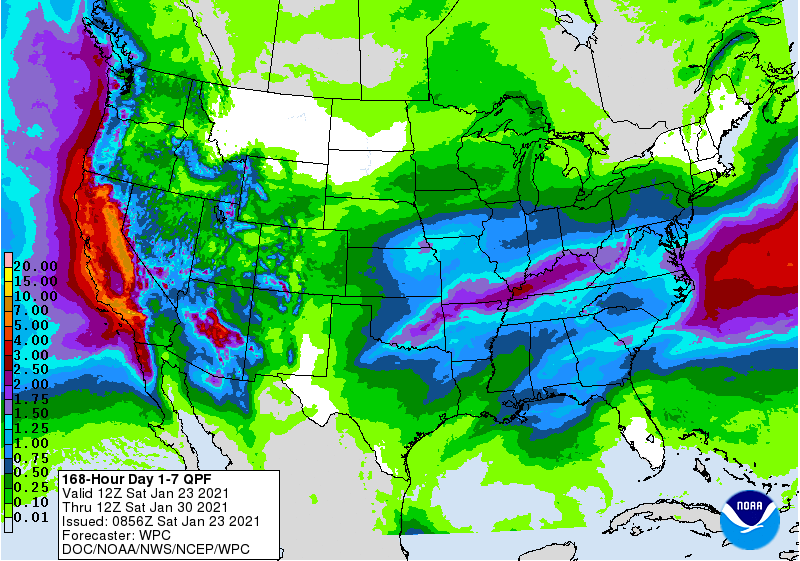-

At this time of year, fruit farmers are anxiously watching their chill hours to see if they have received enough cold weather to help their plants produce a good set of flower buds for spring bloom. In the past few years, some winters have been touch or go with having enough. Early this year, it…
-

Extension released a new publication on programming for climate and weather for extension agents this week. It contains information on extension programs around the country that are addressing needs for information on climate and extreme weather trends over time and ways that extension agents can help lead the way on preparing for these changes. I…
-

The latest 7-day QPF map shows that most of the region should receive around an inch of rain this week. It will start in northern sections over the weekend, then move south by mid-week. The end of the week is expected to be dry in most of the region. The southern half of the Florida…
Posted in: Climate outlooks -

One of my favorite people to follow on Twitter is Brian Brettschneider, @Climatologist49, who provides an amazing array of climate maps (and quite a few pictures of moose) from his home in Alaska (hence the 49). Today’s maps show the changes in temperature over the past 60 years by county for the US. I have…
-

A quick look at the temperature and precipitation patterns across the Southeast shows that so far this January, the typical pattern of warm and dry conditions across southern parts of the region have not occurred. In fact, the coolest and wettest conditions have occurred where we would normally expect to be warm and dry. Because…
-

The pandemic has caused many problems in society since it started about a year ago. One you might not think of is weather observations. We have been fortunate with our University of Georgia weather stations this year in that we have been able to maintain a regular schedule of visits and sensor calibration and maintenance…
-

Even though this has not been a very typical La Nina winter so far, statistically La Nina conditions are most likely. So the outlook maps for February and February through April show that the warmer and drier than usual conditions we usually see in the Southeast in La Nina winters are still the most likely…
Posted in: Climate outlooks